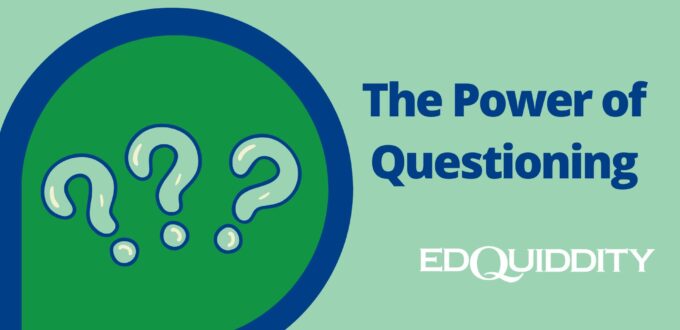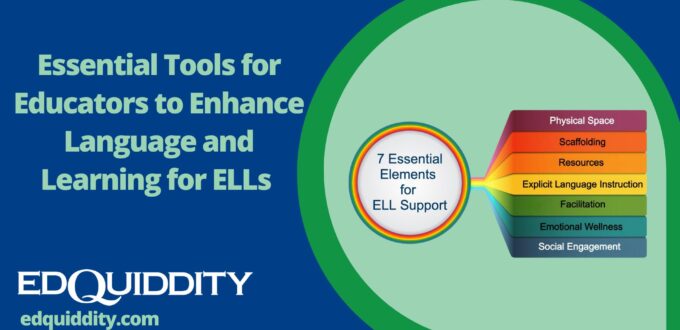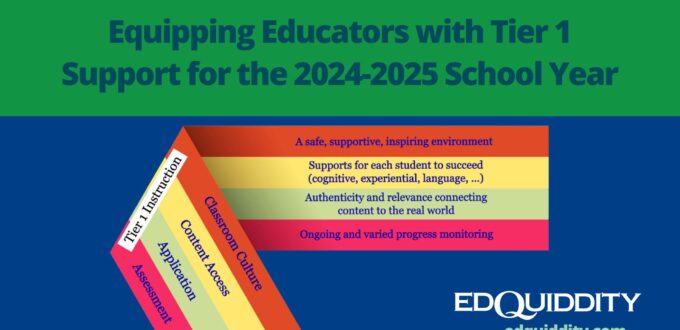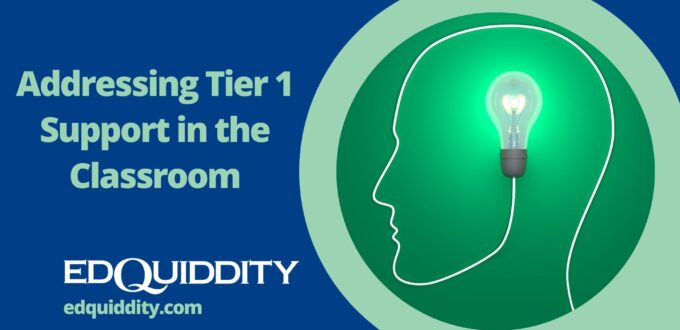Teacher-Driven vs. Student-Driven Classrooms In many classrooms, the traditional setting tends to rely on a teacher-centered approach, where educators control the flow of information, and students passively receive knowledge. Although this can ensure that content is covered, it often limits student engagement, critical thinking, and autonomy. In contrast, student-driven classrooms actively involve learners in shaping…
Essential Tools for Educators to Enhance Language and Learning for ELLs
Addressing the Needs of the Growing Population of ELLs in Today’s Classrooms As classrooms across the country continue to welcome a rising number of English Language Learners (ELLs), teachers face the challenge of ensuring that all students receive equitable learning opportunities. ELL students are not only tasked with learning academic content, but must also simultaneously…
The Power of Formative Assessment and Data-Driven Instruction
Using Data to Drive Instruction: The Key to Reaching Every Student What if you could unlock the potential of every student in your classroom by using the right data at the right time? In today’s diverse classrooms, one of the biggest challenges educators face is effectively collecting and analyzing data to make informed decisions about…
Equipping Educators with Tier 1 Support for the 2024–2025 School Year
The Role of Differentiation in Effective Tier 1 Instruction Tier 1 instruction is the foundation of effective teaching, encompassing high-quality, evidence-based instruction provided to all students in a general education setting. A critical component of Tier 1 instruction is differentiation, which involves tailoring teaching methods and materials to meet the diverse needs of every student,…
Addressing Tier 1 Support in the Classroom
Understanding Tier 1 Support Tier 1 support refers to the initial level of intervention provided to all students within the classroom setting. It encompasses strategies and practices designed to promote a welcoming and affirming learning environment inclusive to every learner. At this tier, teachers are instrumental in identifying and addressing the diverse needs of their…






 In this course, participants will leverage choice and technology to provide students with the ultimate differentiated learning environment. They will develop differentiated digital activity lists rooted in rigorous instruction that offer multiple ways to learn and apply content. Participants will explore autonomy, purpose, and mastery as motivators in all learning environments. They will design differentiated activity lists to put students in charge of their own learning, creating a structure that allows students to make decisions within a structured framework. Making informed decisions is an essential life skill that teachers can support with intentional classroom practices.
In this course, participants will leverage choice and technology to provide students with the ultimate differentiated learning environment. They will develop differentiated digital activity lists rooted in rigorous instruction that offer multiple ways to learn and apply content. Participants will explore autonomy, purpose, and mastery as motivators in all learning environments. They will design differentiated activity lists to put students in charge of their own learning, creating a structure that allows students to make decisions within a structured framework. Making informed decisions is an essential life skill that teachers can support with intentional classroom practices. Participants in this course will use Reinventing the Classroom Experience by Dr. Nancy Sulla as a resource. The assigned book must be
Participants in this course will use Reinventing the Classroom Experience by Dr. Nancy Sulla as a resource. The assigned book must be